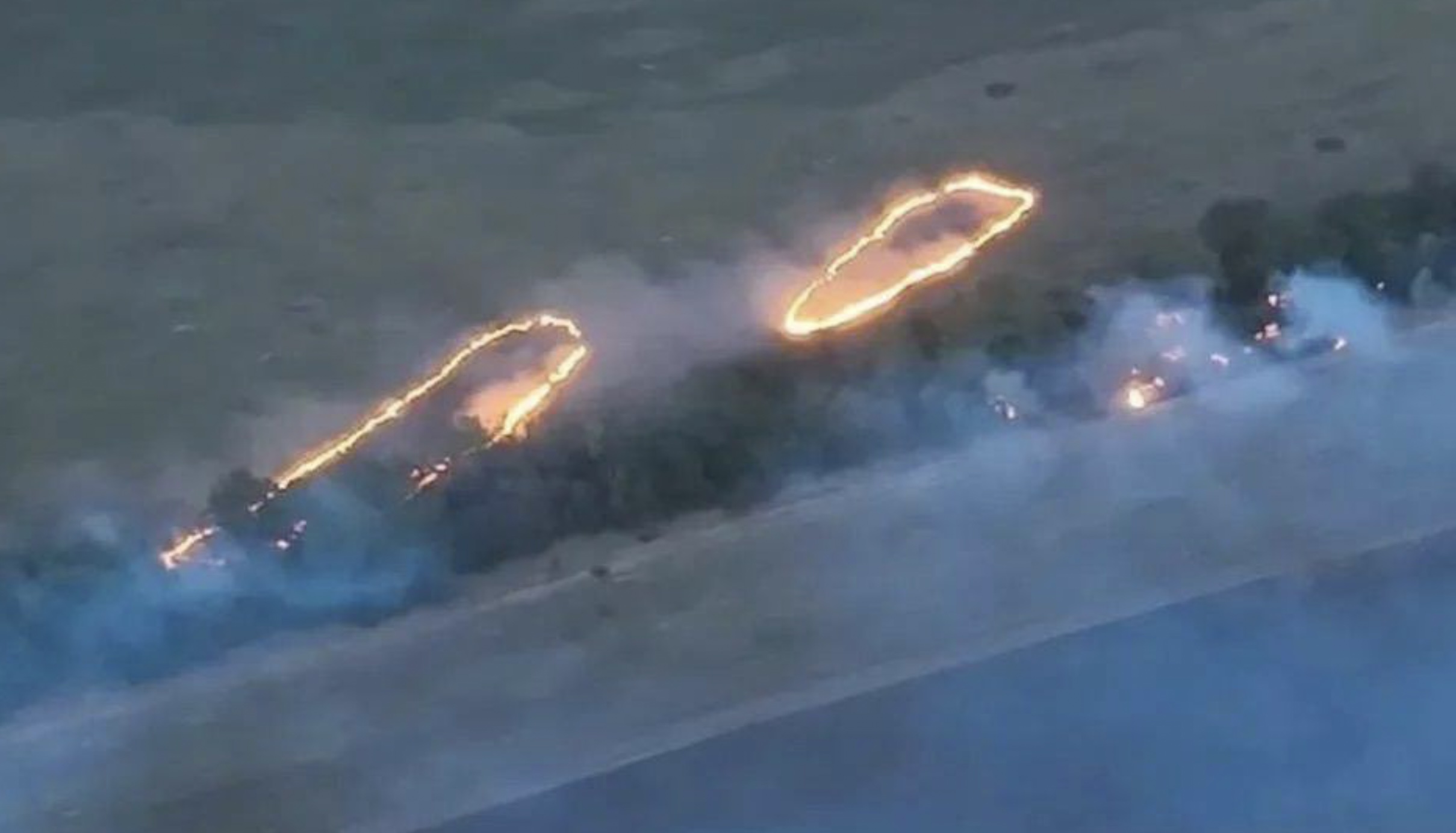Wars of necessity spawn weapons innovation as each side tries to counter the other's tactics and punch through defenses. For instance—as the Russian invasion of Ukraine has made drone warfare real, both sides have developed ways to bring down drones more easily. One recent Ukrainian innovation has been building counter-drone ramming drones that literally knock Russian drones from the sky.
In the case of the trench warfare that currently dominates the Russian invasion of eastern Ukraine, the Ukrainians have another new tactic: dragon's fire. Delivered by drone.
Videos have begun to circulate on Telegram and X this week from Ukrainian units showing their new weapon. (You can see three of them below.) The videos each show a drone moving deliberately along a trench line as it releases a continuous stream of incendiary material, which often starts fires on the ground below (and ignites nearby ammunition).
The most terrifying development in drone warfare I’ve seen thus far. Makes FPVs with unitary warheads look like a walk in the park.
— Artoir (@ItsArtoir) September 2, 2024
The POV videos of incendiary rockets cascading burning magnesium and thermite were horrifying, but this is next level. pic.twitter.com/muF2kbHPqJ
Ukrainian thermite dropping drones continue to rapidly proliferate through various drone units.
— OSINTtechnical (@Osinttechnical) September 4, 2024
Seen here, a Ukrainian drone from the 60th Mechanized Brigade drops a stream of molten thermite on a Russian-held treeline. pic.twitter.com/o20diLuN1L
The video from Ukraine's 116th Mechanized Brigade. pic.twitter.com/BBaUGUFvJt
— Rob Lee (@RALee85) September 4, 2024
This drone type is allegedly called "Dragon" and is said to feature thermite, a mixture of metal powder (usually aluminum) and metal oxide (in this case, said to be iron). When a thermite mixture is ignited, it undergoes a redox reaction that releases an enormous amount of heat energy and can burn anywhere. It can get really, really hot.


 Loading comments...
Loading comments...
